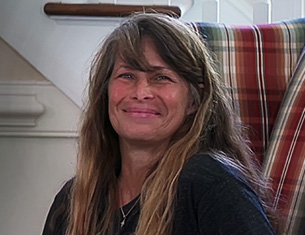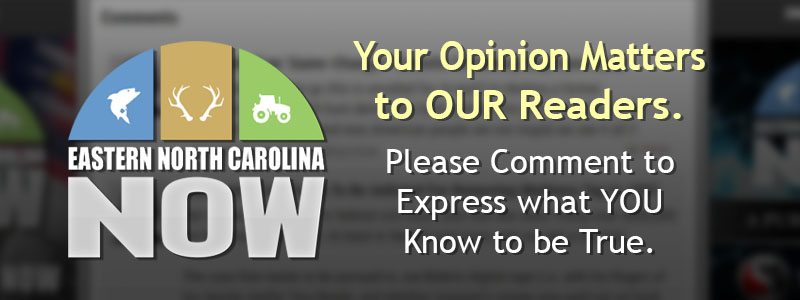Publisher's note: This post, by Susan Myrick, was originally published in the Elections & Voting section(s) of Civitas's online edition.
The first article I read during this election season that predicted a Hillary Clinton victory (using voter turnout) in North Carolina was dated October 12 and written by Jeremy W. Peters of the
New York Times News Service. In his story, titled
"Early voting could hand election to Hillary Clinton well before Nov. 8," Peters suggested that North Carolina is a win or die state for Trump and the early numbers were troubling for Trump.
Pushing the same narrative, two more articles were published the very next day, one from
CBS News,
"Could absentee ballots spell trouble for Donald Trump in North Carolina?" and the other on the
Bloomberg Politics site titled
"Clinton Campaign Makes Drive for Early Votes to Sew Up North Carolina." In all these stories, the mainstream media would have us believe that all Democrats voted for Clinton, all Republicans voted for Trump, etc and all one would have to do is count the number of voters by their political party to determine the winner.
All three stories were based on 29,246 absentee ballots returned by mail at that time. That number, we now know, was less than one percent of the final tally for all early voting, including in person voting, that ended on November 5. Early voting turnout topped 3,102,834 ballots cast - a record in North Carolina.
It didn't take long to realize that Peters' story was the beginning of a political strategy that seemed to promote a win for Clinton by using early turnout numbers at the same time ignoring voter turnout history, especially in battleground states like North Carolina.
While we might want to blame the shoddy reporting and predictions on writers who don't understand North Carolina's political landscape, we need only look to the
News and Observer to see similar reporting on North Carolina early voting turnout. In the October 26 story, six days into early voting, the first line;
"Democrats in North Carolina are outpacing Republicans and independents in early voting" is a reflection of the rest of the story - mainly comparing turnout with voter registration percentages.

Traditionally, early voting turnout has favored Democrats because of their superior use of get-out-the-vote (GOTV) efforts by affiliated nonprofits, such as Democracy NC, League of Conservation Voters, Planned Parenthood, NAACP and the ACLU among others. Election Day has tended to favor Republican turnout and the percentages in the chart below always change as voting ends on Election Day.
For instance, in 2012 at the end of Election Day, the percentage of Democrats voting dropped to 44.2 percent from 47.5 percent after early voting. The African American percentage dropped from 27.3 percent to the post early voting percentage of 23.1 percent.
To understand voter turnout, at least in North Carolina, its best to compare past elections' turnout, because in North Carolina Democrats far out-number Republicans and have since 1898. Democrats always vote in higher numbers because there are so many more of them and it has only been in the last eight years where we have observed a major shift in voter registration, with Democrats losing ground, Republicans holding steady and the unaffiliated rolls growing by leaps and bounds.
So, what should we make of the last two months of early voting? The chart below allows you to become the political pundit and decide what the 2016 early voting numbers might mean.
Comparing early voting in 2016 to 2012, a year where Mitt Romney won North Carolina by nearly 100,000 votes, the state Senate and House solidified their numbers with super-majorities and a Republican Governor and Lt. Governor were elected is where we begin. At this point, Republicans appear to hold the winning cards. Especially if they turn out on Election Day in the way that they have done since the implementation of early voting in North Carolina. While they make up nearly the same percentage of the early vote as they did in 2012, Republicans have increased their numbers during early voting by nearly 115,000 votes compared to 2012. Democrats, on the other hand haven't reached their 2012 numbers, falling about 23,000 votes short of that year's tally. Furthermore, in 2016 Democrats make up only 41.7 percent of the early vote compared to 47.5 in 2012.
Perhaps most notable in these comparisons are the unaffiliated voting numbers and the African American turnout. Unaffiliated voters have increased their voter registrations by more than 300,000 since 2012, they have also increased in voter turnout in 2016. This year they make up 26.07 percent of the overall early voting turnout compared to 20.8 percent in 2012. Unaffiliated voters show an increase of 225,000 votes cast in the early voting period compared to 2012.
The African American voting bloc, a very important segment of the Democrat's vote, is down in the 2016 early voting period compared to 2012 in both numbers and percentage. In 2012 they made up 27.3 percent of the early voting totals compared to 22.2 percent this year. This year they lagged behind the 2012 total by more than 68,000 ballots.
No one knows what Election Day will bring. Will Republicans turn out in much higher numbers than the Democrats or will the Democrats use their once legendary GOTV efforts to rally their less than stellar numbers? Or will the unaffiliated voters surprise even the most knowledgeable political experts?
























